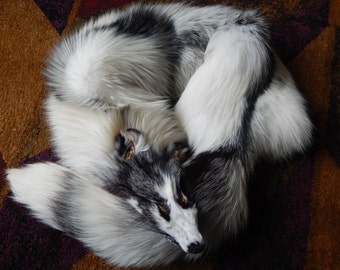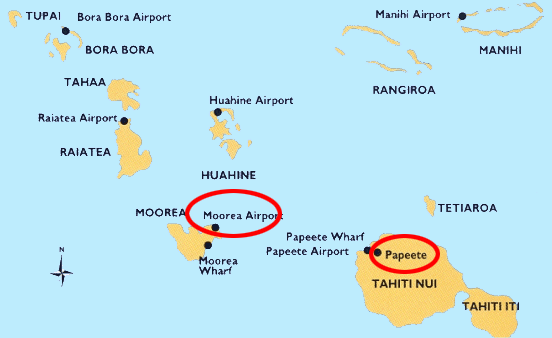Cockpit of F-OIQI (Photo: BEA)
An Air Moorea de Havilland DHC6-300 Twin Otter, registration F-OIQI performing 7 minute flight QE1121 from Termae on Mo'orea to Papetee (Tahiti) with 19 passengers and one pilot, lost height and impacted a lagoon after takeoff from Mo'orea. The BEA concluded, that the crash was caused by rupture of the elevator cable as the result of wear, an external force most likely being a jet blast, and applied normal pilot input during retraction of the flaps.
The French Bureau d'Enquêtes et d'Analyses (BEA) have released the final report into the crash reporting, that the flight was conducted under visual flight rules (VFR) at a scheduled altitude of 2000 feet. The flight would have lasted about 7 minutes. After a normal takeoff preparation the airplane positioned on the runway for takeoff and got cleared for takeoff about 2 minutes later. The pilot advanced throttles, 52 seconds later the pilot retracts the flaps, further 9 seconds later he reduces the power. 2 more seconds later the pilot utters an exclamation of surprise, two GPWS alerts sound, the power setting is increased again, 4 more GPWS alarms sound. 11 seconds after the exclamation the airplane impacts the waters. Between advancing throttles for takeoff and impact with water were 1 minute and 8 seconds.
During investigation it was found, that the elevator cable connecting the yoke with the moving elevator control surfaces had broken in two locations, one close to the yoke and another rupture close to the elevators.
Analysis found, that although the cable showed traces of chafing and wear (which were not noticed during initial visual inspection by BEA), the rupture could not have occurred without additional beforehand weakening of the cable by an extreme force exceeding the possibilities of pilot input or regular operating conditions. The BEA computes, that an Airbus A340, departing the stand at Papeete with F-OIQI being parked overnight about 80 meters away from the A340 produced a sufficient impulse to cause the breakage of several strands of the cable. After the cable was weakened that way, the remaining strands wore further down through normal flight load and finally broke suddenly during the regular control forces necessary during retraction of the flaps.
Frayed stainless steel cable
F-OIQI was the only airplane within the fleet of Air Moorea equipped with stainless steel elevator cables, while the other aircraft were equipped with carbon steel elevator cables. The two types of cables are interchangeable and have the same maintenance intervals and activities. The operator did not know however, that the carbon cables are more susceptible to corrosion, while the stainless steel cables are susceptible of wear. The maintenance interval is based on calendar intervals and does not take the activity of the airplane into account. Many operators had therefore reduced inspection intervals on their own.
The BEA concluded, that the most probable cause of the crash was:
the loss of pitch control after the elevator cable broke during retraction of the flaps
The failure was caused by the sequence of following events:
- - significant wear of the cable at a rope pulley
- external phenomenon, probably jet blast, causing the breakage of several strands
- failure of the last strands as a result of regular flight control forces
Contributing factors have been:
- - the lack of information about and training of a loss of pitch control provided to pilots
- omission of special inspections by the operator
- inadequate consideration of wear by manufacturer and the authority granting airworthiness
- inadequate consideration of risks of jet blast by airworthiness authorities and airport operators
- the rules to replace the stainless steel cables based on a calendar without considering the activity of the aircraft in terms of type of operation.
Six safety recommendations were made as the result of the investigation.










